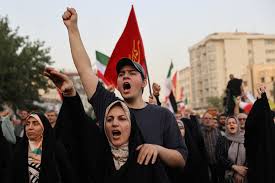
A detailed analysis of the recent Israel-Iran ceasefire, its geopolitical consequences, and global reactions.
The Israel-Iran conflict has been one of the most complex and volatile standoffs in the Middle East for decades. On June 25, 2025, the world breathed a cautious sigh of relief as news broke of a ceasefire agreement brokered by the United States and the European Union. The deal comes after months of rising tensions and several near-breakouts of full-scale war.
This ceasefire aims to end cross-border missile attacks and cyber warfare between the two nations. Both sides have agreed to demilitarized zones and international inspections, though skepticism remains high. The U.S. played a critical role in negotiations, with strong backing from the European Union and neutral support from Turkey and Qatar. Oil prices fell on the news, signaling global market optimism. The United Nations has called this a “small but vital first step toward peace.”
Yet, history warns us this peace may be temporary unless structural issues are resolved. Iran’s nuclear ambitions and Israel’s regional security fears remain unresolved. The next few months will be crucial in determining if this truce leads to lasting peace or another cycle of violence.
